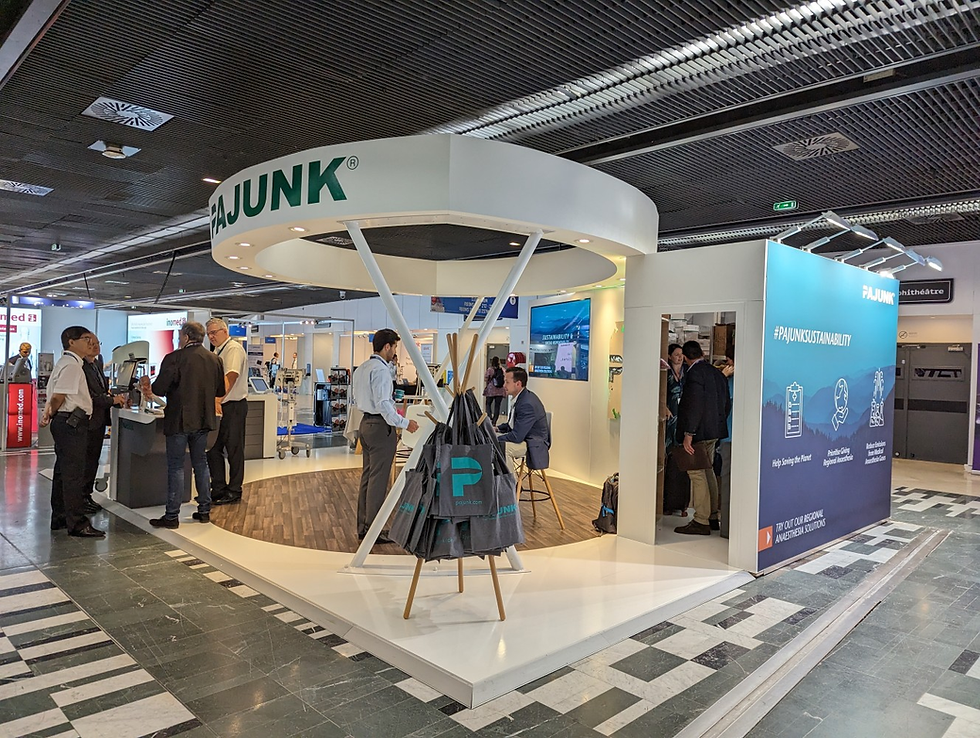Market Dynamics in Regional Anesthesia Medical Devices: Observations and Innovations
- Karl Tsao

- Nov 23, 2023
- 3 min read

As Thanksgiving and the Holiday Season approach, it's a fitting time for reflection and planning at Flat Medical. The year 2023 has been eventful, marked by significant participation in over 20 conference exhibitions across America, Europe, Asia, and Australia. Our focus has been on anesthesiology, pain medicine, critical care, and emergency medicine, and for our first flagship product, we have a particular emphasis on obstetric anesthesia, regional anesthesia and pain interventions.
Observations from Key Congresses
In the last three years, I've attended major regional anesthesia congresses, including the ASRA, ESRA annual meetings, and the NYSORA international symposium. Notably, the ESRA World Congress in Paris this September was a landmark event, uniting regional anesthesia professionals worldwide and showcasing various medical device manufacturers.
Market Trends
As I walked through the exhibition hall, I noticed a significant presence of ultrasound device manufacturers among the exhibitors. While I am not an expert in ultrasound technology and will refrain from commenting on this aspect, another prominent section of the exhibition caught my attention. It was dedicated to companies specializing in the production of needles, syringes, catheters, and other components crucial for regional anesthesia (RA) procedures. After having the conversation with some experienced industrial colleagues, I observed several trends:
B Braun: The multi-billion German company continues to dominate the market, emphasizing their commitment to supporting users and highlighting their brand's value- Sharing the Expertise.
BD: Although a giant in the industry, its regional anesthesia unit is smaller and receives proportionately less investment. ICU Medical: Post-acquisition of Smiths Medical, they faced supply chain challenges with their #Portex product lines, leading to some market share loss. However, they seem poised for a comeback.
Pajunk: Known for high-quality products and clinical innovation support, Pajunk is signaling a “New Era”, with increased marketing efforts and a burgeoning leadership role in the market. You can see how ambitious they are with all the efforts putting in.
Teleflex: Despite being a serial acquirer and key player in medical innovation, their investment in regional anesthesia seems limited compared to other sectors like vascular or urology.
Vygon: A major player in Europe and Asia, particularly in anesthesia and vascular access, but less active in the U.S. market.
Over the past few years, there has been a noticeable shift in the regional anesthesia market. Certain manufacturers have successfully built stronger brand trust and expanded their market share. Conversely, others are experiencing a decline in their customer base, prompting a reevaluation of their strategies for regional anesthesia products. Additionally, the transition in European regulations from MDD (Medical Device Directive) to MDR (Medical Device Regulation) is significantly influencing these strategic choices.



Spotlight on Innovation “But most of the things there are nothing new, nothing innovative.” This is commonly heard at the regional anesthesia shows from the clinicians. This time, a highlight of the event was the “corner with innovations,” featuring Medovate's #SAFIRA system and Flat Medical's #EpiFaith syringe. Both companies, backed by venture capital, are expanding their global reach through distributor partnerships. If you are actively doing RA procedures, I would strongly recommend you to check out these two companies’ websites and YouTube videos.


Notable new standard- ISO 80369-6, the NRFit
Many leading companies in the market, such as B Braun, Pajunk, and Vygon, are deeply invested in adopting the NRFit Connection, the new connector standard for neuraxial products. This adherence to the new ISO standard aims to prevent misconnection incidents, thereby reducing errors in medication administration. The non-profit organization GEDSA is at the forefront of this initiative, collaborating with manufacturers, healthcare institutions, and professionals to facilitate a smooth transition.

Conclusion: The Future of Regional Anesthesia Devices
Despite not being high-margin products, there is significant potential in regional anesthesia devices. Solving the right problems with innovative solutions can yield substantial returns and enhance medical procedures' safety and ease, benefiting both healthcare providers and patients.
For more information on #SAFIRA, #EpiFaith and the #NRFit, please contact Tremayne Rutherford, Karl Tsao and Ben Davis, respectively.
For #NRFit: ben@gedsa.org

